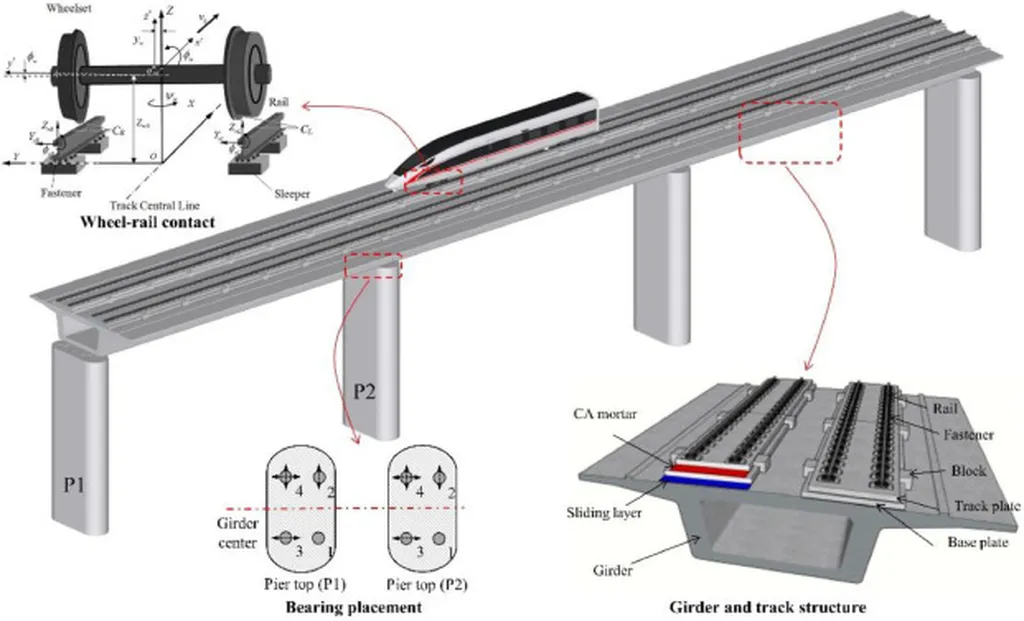In the realm of railway infrastructure, a groundbreaking study led by Ke Chen from the School of Civil Engineering at Sichuan University of Science & Engineering in Zigong, China, is set to redefine how we approach the seismic safety of bridges. Published in the journal *High-Speed Railway* (translated from Chinese as “高速铁路”), the research delves into the intricate dance between vehicles and bridges during strong earthquakes, offering insights that could significantly impact the design and safety protocols of railway systems worldwide.
Railway bridges are not static structures; they are continuously subjected to dynamic loads from passing trains. This constant interaction between vehicles and bridges becomes even more complex during strong earthquakes, where the nonlinear behavior of bridge piers plays a crucial role. Chen’s study introduces a novel approach by incorporating the nonlinear behavior of piers into Vehicle-Bridge Interaction (VBI) solvers. This advancement allows for a more accurate evaluation of the seismic response of the VBI system.
“The seismic responses of most simply-supported bridges were reduced in the presence of railway trains due to the out-of-phase motion of the vehicle-bridge system,” explains Chen. This finding is pivotal, as it suggests that the dynamic interaction between vehicles and bridges can actually mitigate some of the seismic forces acting on the bridge. However, the story doesn’t end there. The study also reveals that the nonlinear behavior of the pier can reduce the vehicle’s seismic responses, indicating that ignoring these nonlinearities during strong earthquakes can lead to a significant overestimation of the vehicle’s seismic response.
The implications of this research are far-reaching, particularly for the energy sector, which relies heavily on robust and efficient transportation networks. “Understanding the nonlinear seismic response of the VBI system is crucial for ensuring the safety and reliability of railway bridges, especially in regions prone to strong earthquakes,” Chen emphasizes. By accurately modeling the VBI system, engineers can design bridges that are not only safer but also more cost-effective, as they can avoid over-engineering based on overestimated seismic responses.
This research is poised to shape future developments in the field of railway engineering. By providing a more comprehensive understanding of the VBI system’s nonlinear seismic response, it paves the way for more precise and efficient design standards. As the world continues to invest in high-speed and heavy-haul railways, the insights from Chen’s study will be invaluable in ensuring the safety and longevity of these critical infrastructure projects.
In the ever-evolving landscape of railway engineering, Chen’s work stands as a testament to the power of innovative research in driving progress. As we look to the future, the findings from this study will undoubtedly play a crucial role in shaping the next generation of railway bridges, ensuring they are not only resilient but also optimized for performance and safety.

